Birds migratoryHalf a billion birds passes through the skies of Israel twice a year, during the autumn and spring, using the excellent gliding conditions over the Jordan and Arava valleys which lay on the African-Syrian rift. This phenomenon is most interesting, and many try to investigate and understand the way they do it. The phenomenon of bird's migration was known in ancient times, in the babble we find:...even the stork in the sky knows her appointed seasons, and the dove, the swift and the thrust observed time of their migration... Jeremiah 8:7, 39 ...does the hawk take flight by your wisdom and spread his wings towards the south... job 39, 26 Although there are many groups of animals, both aquatic and terrestrial that regularly undertake migrations, those of birds are the most striking in various ways. The migrations of birds have caught the attention of man since ancient times, but only in the last few decades have different study techniques, especially ringing, and helps by birds watchers, made it possible to discover the details of migratory movements in a substantial number of species and to understand the basics of migration.Birds as small as the Willow Warbler Phylloscopus trochilus, weighing only 10 g, are capable of flying from Siberia or even Alaska to winter quarters in Africa beyond the Sahara, some 12,000km away, and, furthermore, of returning with incredible precision to the same breeding grounds the following spring. The Arctic Tern Sterna paradisaea flies between areas of the Arctic and Antarctic during migrations of up to 15,000 km. Not all kinds of movement undertaken by birds can be classed as "true" migration. Some affect only certain individuals among populations, without the geographical centers of the population changing, as happens, for example, in the very common cases of juvenile and post-breeding dispersal. Other movements are of an unpredictable nature, brought about by more or less sudden, non-cyclical changes in ecosystems, including: waves of cold weather, which lead to movements in the Northern Lapwing Vanellus vanellus ; prolonged droughts, affecting many aquatic birds; sudden crashes in the availability of food, which lead to irruptions of taiga birds, when the pine kernel crop fails, or of Rough-legged Buzzards Buteo lagopus and Snowy Owl Nyctea scandiaca, when lemming populations slump; irregular rainfall in arid areas, causing nomadic movements of desert birds; and so on. Migration, in the strict sense, is characterized instead by its regularity and predictability, and because it affects entire populations. The birds move between breeding grounds and winter quarters that can be far apart, and that clearly differ from an ecological point of view. This spatial and temporal regularity allows migratory birds to take advantage of two different ecosystems, and therefore to maintain year round activity, without having to resort to torpor or hibernation in order to survive the winter, as other animals do. In most cases migrations are latitudeinal, from boreal or temperate regions to temperate or tropical regions, and vice versa on the return, but very often they also entail longitudinal or altitudinal components, for example birds from the interior of a continent, which winter in coastal areas, or those from the mountains that winter on the plains. Migration sometimes involves marked changes in habitat, as with many insectivores that breed in forests but winter in savannas, or for phalaropes and skuas, which breed on the tundra but winter on the open sea. Migration affects an enormous number of birds. It is calculated that 40% of the species that nest in the Palearctic spend the winter outwith this region, some 5,000,000,000 birds wintering in the Afrotropical Region, without including water birds.The corresponding figures for the Nearctic-Neotropical migration systems are probably not very different. Many other species migrate within their zoogeographical region of origin, so that, for example, the number of boreal birds that do not migrate, at any rate to some extent, is fairly small. In Canada, out of 160 species of passerines, some 120 move off for the winter, as do most individuals in another 15 species. Many bird species are only partial migrants, with varying proportions of sedentary and migratory individuals in a given population, and with migrants traveling very different distances. For example, many birds that are spread out all over Europe in the breeding season have populations which are wholly migratory in the north of Russia, partially migratory in Central Europe and totally sedentary in the British Isles and Mediterranean countries. There is a clear relation between the type of food exploited and the extent to which a species is migratory, so that birds that eat seeds, shoots or buds, which are available during the temperate winter, tend to travel much less than, insectivores, for example. There is also a certain degree of correspondence with the morphology and consequent flight capacity of each species, and less migratory species normally have high wing-loading, as in the Galliformes, ducks or auks. The more migratory species normally have long, narrow wings, as in shearwaters, waders, terns, bee-eaters, swifts and swallows, or are good soarers, such as storks and certain raptors, and all of these birds have economical methods of flight. Within the same family or genus, those species that are more migratory tend to have narrower, more pointed wings, for instance in the Willow Warbler Phylloscopus trochilus, which is a trans-Saharan migrant, as compared with the Eurasian Chiffchaff Phylloscopus collybita, a partial, short distance migrant; to some extent the same tendency can also be found within the same species in different populations. Migration clearly involves high risks for the individual. It has to make lengthy crossings of inhospitable environments, such as seas or deserts, with the possibility of gales or storms, probably an increase in predation, and, on arrival at the destination, competition with resident birds. However, as the practice has evolved in so many species, there must be great advantages. Many migrants, particularly those that cover long distances, belong to taxonomic groups that are essentially tropical, which suggests that migrants are birds of tropical origin that move off to breed in temperate or boreal zones. These regions have strongly seasonal, loosely structured ecosystems, which show outstanding increases in carrying capacity during spring and summer. In these zones birds encounter less competition, more daylight hours for foraging, greater availability of nest-sites and lower rates of predation, and all this combines to produce far higher breeding success than that achieved by related, non-migratory species in the tropics. On the other hand, birds of northern origin that migrates, normally only partial migrants, find advantages mainly in what is known as winter survival. Among these northern birds, the fact that some migrate, while others do not, can be explained by the improved breeding success in the most sedentary individuals. These can control the best breeding grounds in advance, and in this way compensate for the higher risks they run by remaining during the winter. In connection with this, it has frequently been noted that on average males cover far less distance than females, which is very obvious in the cases of the Chaffinch in Eurasia and the Dark-eyed Junco Junco hyemalis of North America. So, in general, migrants gain in reproductive output in comparison with sedentary tropical birds, though they suffer higher mortality, whereas in comparison with sedentary birds in cold countries, the opposite is true, as they improve their survival rates, but lose out in terms of breeding success. As both survival during the winter and reproductive success during the breeding season ultimately depend closely on seasonal variations in the availability of food, it is obvious that such variations constitute the "ultimate factor" responsible for the evolution of migratory behavior. However, it is definitely not one of the catalysts that it off, as migrants sets do not depart due to hunger; rather, their departure anticipates, sometimes well in advance, a real lack of food. Like breeding or molt, migrations are subject to a genetically programmed, endogenous circannual rhythm which is conditioned by different external factors. The most important of these is the photoperiod, but other factors intervene in the fine adjustment of the date, including some meterological aspects, such as temperature, winds and cloud cover. The first signs of migratory behavior are displayed in a preparatory phase, at least among long distance migrants, by a large increase in food consumption, which is apparently caused by the action of the hormone prolactin, and leads to notable deposits of fat under the skin, in the muscles and in the peritoneal cavity. The maximum amounts of fat deposits are in the order of 3-5% of the total body weight among sedentary birds, but 13-25% in short distance migrants, and 30-47% in long distance migrants, such as some members of the Parulidae of North America or the Muscicapidae of Eurasia, which, from normal weights of 11-12 g, can reach 21-22 g in only a few days, while the Ruby-throated Hummingbird too can virtually double its initial weight of 3 g. These reserves of fat serve as an enormously effective fuel supply, and also as a store of water during long migration flights. It is calculated that small birds with fat deposits equivalent to some 40% of total body weight can fly for 100 hours without having to eat, covering as much as 2500 km, and that in the Dunlin Calidris alpina, which increases its weight from 50 to 110 g, the resultant reserves are theoretically sufficient for a non-stop flight of 3000-4000 km. This explains the remarkable feats regularly accomplished by many birds, which cross the Mediterranean and the Sahara in one go, or fly non-stop from New England to Venezuela, and similarly the very frequent vagrancies of North American species to Europe or European species to North America. The second phase of the migratory process induces the ethological changes that the bird must undergo, in order to "forget" its daily rhythm of activity, so that it is able to initiate and maintain prolonged migratory flights. In caged birds, this can be seen in migratory restlessness, whereby the birds remain in a particular corner of the cage, jumping about and beating their wings ceaselessly. Between different groups and species there is a great deal of variety both in the way birds migrate and when they do so. Most migratory passerines move only at night, either alone or in small loose flocks, at a fairly high altitude (1000-5000 m, or more), and on a broad front, without taking into account the features of the terrain below. During the day they rest, and if the situation permits, they forage actively to replace as much as possible of their fat reserves. Many waders, rails and ducks also migrate at night. Conversely, swallows and swifts, which feed on the wing, and birds like storks, pelicans or raptors, which use thermals for soaring, migrate during the day and are therefore inclined to follow landmarks, such as mountain ranges and coasts, and at times large numbers concentrate at straits or other points of geographical note, for instance the Bosporus, Gibraltar, and the Gulf of Eilat. How migratory birds navigate is one of the natural phenomena which has most fascinated and intrigued man, but until recently little was known. It now appears fairly certain that diurnal migrants use the position of the sun for orientation, and as its relative position changes throughout the day, birds compensate with the help of an internal biological clock, producing a form of genuine navigation. In a similar way, nocturnal migrants recognize and use the position of the stars. Several experiments in the 1970's demonstrated that many birds are able to use the earth's magnetic field (geomagnetism) for navigational purposes, which must obviously be enormously useful on cloudy days. For short distances, the ability to recognize landmarks on the ground is important, as is generally the case with large, long-lived birds that migrate by day, like cranes, geese or storks, and these birds learn geographical features, such as coastlines, mountains, major rivers or even cities.Finally, in the Petrels and Shearwaters Procellariiformes the sense of smell is important, at least for locating the nest at the end of the journey. The general compass direction followed by migrants is entirely innate, as are any variations in this direction that must be made during the journey. A caged Garden Warbler Sylvia borin in Germany will align itself towards the south-west in the initial phases of the second phase of the migratory process, the direction which, under natural conditions, would lead it to the Iberian Peninsula, and it later changes automatically towards the south, and then towards the south-east, allowing the hypothetical journey to end in Africa and not in the midst of the Atlantic. Research has recently been carried out into the genetic control of this innate behavior. In partially migratory species, for example the Blackbird Turdus merulaEurasian and the European Robin Erithacus rubecyla, the descendants of more migratory individuals tend to travel further than those of more sedentary individuals, in other words, the tendency to migrate is inherited. On the other hand, while various features closely related to migration are inheritable, it appears that they may also be susceptible to a form of "hybridization". In the Blackcap Sylvia atricapilla, for example, if highly migratory Central European birds are crossed with others that are totally sedentary, from the Canary or Cape Verde Islands, the resultant birds have intermediate values in aspects such as wing length, timing of the post-breeding molt, capacity to form fat deposits, and intensity and duration of migratory restlessness. The existence of a kind of genetic polymorphism would explain why in a particular species there are populations that are migratory or sedentary to different degrees, in the same way that in different human populations varying colors of skin or hair may predominate. This would also help to explain the relative flexibility of migratory behavior, which in some species has been known to vary in a short time. Such is the case of the European Serin Serinus serinus, which is essentially sedentary around the Mediterranean, whereas it is migratory in areas of Central Europe that it has recently colonized. It is also apparent in some birds that exploit rubbish dumps in parts of Europe, such as the European White Stork Ciconia ciconia, the Red Kite Milvus milvus and the Lesser Black-backed Gull Larus fuscus, which are progressively becoming more sedentary. It is logical that migratory behavior should be able to change fairly quickly, given its high adaptive value. The migratory patterns that we know nowadays must, in fact, have developed relatively recently in most species, for the last ice age was at its zenith only 15,000 years ago. |

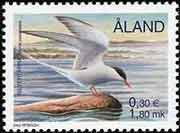
 
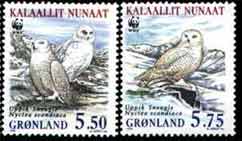

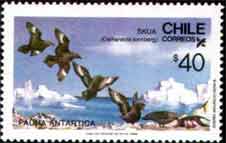
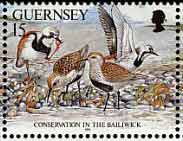
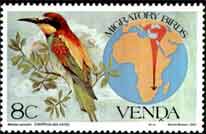
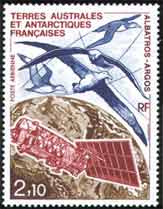
 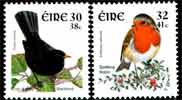
| | |||||||||